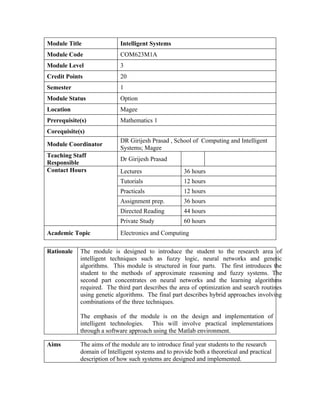This document provides information on the "Intelligent Systems" module, including its code, level, credit points, location, coordinator, content, aims, learning outcomes, teaching methods, and assessment. The module introduces students to intelligent techniques like fuzzy logic, neural networks, and genetic algorithms through both theoretical and practical lessons. Students will learn to design and implement intelligent systems using MATLAB software. Assessment includes coursework assignments and a final written exam.





